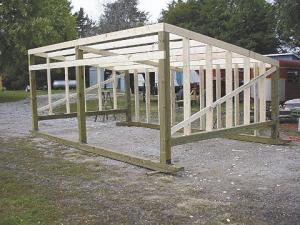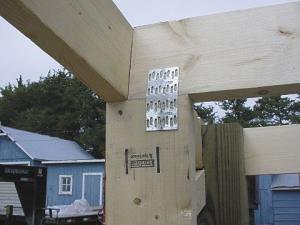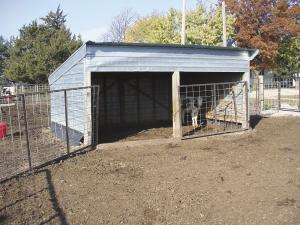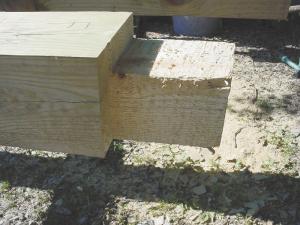2009 - Volume #33, Issue #2, Page #17
[ Sample Stories From This Issue | List of All Stories In This Issue | Print this story
| Read this issue]
Built-To-Last Portable Buildings
 |
 |
 |
 |
All together, Schweppe has built 10 portable, tin-sided buildings. They range in sizes from 10 by 12 ft. to 14 by 22 ft., and serve a variety of purposes.
"I use these buildings for everything from hay shelters to calf sheds to garages," says Schweppe. "All the buildings are built on runners so we can hook up to them with a chain to move. And the framing on all of them is made from notched lumber for extra strength and to provide a smooth surface for the buildings' tin sides. It takes a little more time to build this way because everything has to be cut to fit, but it's worth it," says Schweppe.
He uses 6 by 6 treated posts on all the building's corners (bigger sheds have an extra 6 by 6 at the middle on each side) for maximum strength. The 6 by 6's are notched at the top to accept 2 by 6's, which hold the sides up and also support the rafters. The side tin is applied horizontally. "These sheds are built strong enough to resist high winds," says Schweppe.
Angle iron brackets and 3 1/2-in. lag bolts are used to attach the 6 by 6 corner posts to the runners. "Recently, along with using angle iron brackets, I've been adding metal connector plates that simply hammer in place. A connector plate holds lumber together just as if they were laminated together," says Schweppe.
A 1-ft. wide strip of heavy rubber belting runs across the ends of the livestock sheds. The upper edge is attached to a horizontal 6 by 6 about 1 ft. off the ground, while the bottom end is loose. As the building is towed to a new location, the belt helps the building slide up and over the manure. "It's a lot easier to remove manure out in the open, instead of having to go inside the building so we just move the buildings out of the way," says Schweppe.
He lines the inside of livestock buildings with 16-ft. metal fence panels. "The fencing keeps the animals from damaging the walls, and also strengthens the walls," says Schweppe. "When the buildings aren't in use, gates can be added on front to keep the animals out."
Contact: FARM SHOW Followup, Glen Schweppe, 1355 S. 32nd Rd., Syracuse, Neb. 68446 (ph 402 269-2602; gs85827@yahoo.com).

Click here to download page story appeared in.

Click here to read entire issue
To read the rest of this story, download this issue below or click here to register with your account number.




